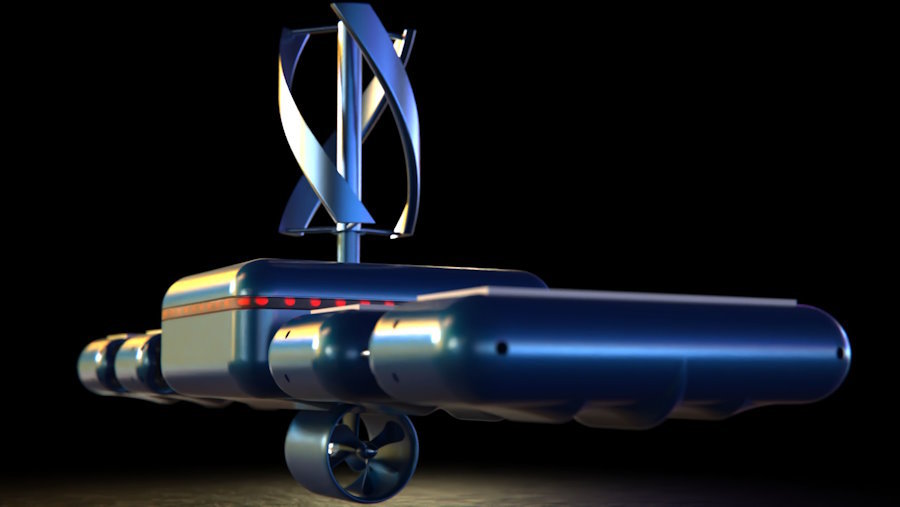Traditional Wave power generation relied solely on large waves to obtain energy, resulting in a lack of practicality. However, WAVR has developed a WEC (Wave Energy Converter) that can harness energy from even small waves. In this article, we will take a closer look at the WEC.
Visit the Official WAVR Website
1. Limitations of existing Wave power generation
To briefly introduce Wave power generation, it is a method of converting the kinetic energy of waves into electrical energy. The limitations of wave power generation include the following:
- Irregularity of waves: Waves are irregular and have different shapes depending on the region, making them unstable.
- Energy efficiency cost: Additional energy conversion systems are required to transfer wave motion to turbines, resulting in energy loss.
- Impact on marine ecosystems: Submarine cables used to transmit generated electricity to inland areas can disrupt marine environments.
There are such limitations. It seems that these problems can be solved by utilizing WEC. For example, conventional wave power plants could only be built in areas with strong wave power, and despite the fact that Korea is surrounded by the sea on three sides, the only place where wave power plants are actually built is Jeju Island. Currently, KRISO (Ship and Ocean Plant Research Institute) is producing electricity through the ‘Yeongsu test wave power plant’ and the ‘Mokpo wave power plant’. Utilizing WEC means that the potential for energy generation is significantly increased not only in areas with strong wave power, but also in areas with weak wave power.
(Currently, South Korea plans to increase the proportion of marine energy from 1% to 1.6% by 2025.)
2. Conceptual Design of WEC (How is the concept of WAVE ENERGY CONVERTER different?)

Igarashi explains his conceptual design as follows:
“Our idea for WAVR is not a device that generates power from a single large wave, but rather a device that uses small waves to generate energy. And we increase the amount of electricity generated by adding more modules.”
WEC uses a hinged buoy device to convert wave motion into electrical energy, which is then stored in batteries. Unlike traditional wave power generation, it utilizes not only large waves but also small waves to generate energy.

“The modular design will be smaller and easier to develop.”
As a result, the device is relatively small in size, which means that it could potentially be expanded to create a wave power station in the future, much like a solar panel farm.
The first prototype of WEC was developed to be used as a stand-alone system to supply power to small electrical devices, such as boats. However, the founder of WAVR, CLYDE IGARASHI, hopes to collaborate with larger companies to supply energy to more people.
3. Who needs it and why?
The International Energy Agency (IEA) has mentioned that “using ocean energy could generate 20,000-80,000 TW of energy” for wave power generation.
This is a level that exceeds the 20,000 TW of energy used worldwide. It is worth considering for countries surrounded by the sea, such as inland areas surrounded by the sea and remote islands. South Korea should also focus on this technology, as it is a country surrounded by the sea.
Other reasons include:
- Endless supply of energy: Waves can generate energy 24 hours a day.
- Responding to climate change: It is an important solution to address global warming.
- Energy independence: Using wave power can reduce dependence on energy imports between countries.
- Conservation of resources and environmental protection: Renewable resources can be utilized to reduce environmental pollution.
4. Development and utilization prospects of WEC
Currently, the power generation capacity of WEC is only 3W per unit, which is only one quarter of the power generation capacity of a typical solar panel. However, while solar energy can only generate power for about 7 hours during peak hours per day, wave energy can generate power 24 hours a day. Furthermore, it should be noted that WEC is a prototype that has been developed for just over a year. The power output is expected to increase in the future.
Igarashi: “There are many places where there is no sunlight but there are plenty of waves. We expect WEC to be more useful in those places.”

In addition, WEC can be integrated with solar, hydro, and wind technologies to create hybrid systems, which are expected to increase power generation capacity. As the module is small, it can also be used around existing wind power generation sites, minimizing the amount of space the device occupies.
Igarashi: “Of course, we hoped that the output of WEC would be competitive with solar power generation from the beginning. However, as it is the first prototype, we are currently satisfied. We expect the output of WEC to increase as we continue to improve the components and design.”
John Waihee, an advisor to the WAVR project and the former governor of Hawaii, said the following:
“We are aware of the potential impact of this technology. Therefore, we recommend proving this concept as soon as possible and disseminating information. Hawaii’s clean energy plan aims to achieve 100% clean energy by 2045. It may be late, but WEC can play an important role in achieving that goal.”
“As an island surrounded by the Pacific Ocean, Hawaii can benefit greatly from the rapid development of WAVR technology.”
“As one of the most isolated pieces of land in the world, we can secure a more sustainable future by utilizing the surrounding natural resources.”
“If wave energy can be utilized along with other renewable energy technologies such as solar and wind power, it will be a significant step forward.”
Designor : Giorgio Corrado, Walter Bozzetti, Mostafa Ali
advisor : Victor Cheboxarov, John Waihee
Product developer : Robogio Dynamics
Developer : Clyde Igarashi


Comments